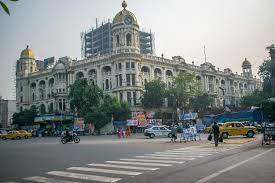
Kolkata Becomes 3rd Indian City To Get Air Quality Early Warning System: Kolkata, India, has taken an important step forward by implementing an Air Quality Early Warning System (AQEWS) designed by the Indian Institute of Tropical Meteorology (IITM) in Pune. This system offers both real-time air pollution data and forecasts, with the objective of enhancing readiness and facilitating measures to tackle the escalating air pollution levels within the city.
Daily Current Affairs Quiz: August 2023
Real-time Monitoring and Predictions
The AQEWS in Kolkata comes equipped with an intricate network of sensors that monitor the air quality index (AQI) in real-time. This AQI is a standardised metric that ranges from 0 to 500 and is used to quantify the degree of air pollution in a specific area. A higher AQI signifies more polluted air and a greater risk to one’s health. The AQEWS provides this data by analyzing the concentration of pollutants like PM2.5 (particulate matter with a diameter of 2.5 micrometers or smaller), which has been identified as a major contributor to health problems due to its ability to penetrate deep into the lungs.
Critical Air Pollution Levels in Kolkata
The city of Kolkata has been grappling with critical levels of air pollution, mainly driven by pollutants such as PM2.5. According to the Air Quality Early Warning System (AQEWS), the city just registered an AQI of 74, and it is expected to exceed 170 by August 30.Such forecasts underscore the urgency of addressing air pollution in Kolkata and highlight the role of early warning systems in driving effective interventions.
Data Integration and Prediction Accuracy
The Air Quality Early Warning System (AQEWS) leverages data from the national air quality network as well as satellite sources to generate accurate predictions. The system’s accuracy was demonstrated during its experimental phase, which began in September 2022. The integration of data from 420 air quality monitoring stations across India in the early warning system ensures a complete and holistic approach to air quality assessment.
Key takeaways for competitive examinations
- Union Minister of Environment, Forest and Climate Change: Bhupender Yadav





